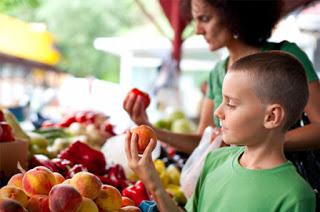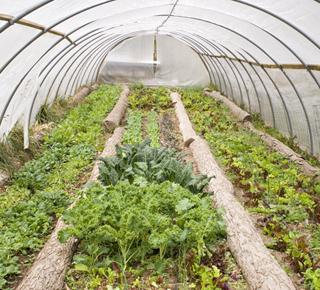By Anna Romanova
This blog entry is the result of the one week fieldwork spent on Salt Spring and Pender Islands (http://www.hellobc.com/vancouver-island/popular-areas/gulf-islands.aspx ), where MA SLM students’ group was learning about sustainable issues and challenges that communities are facing on the way to their sustainable development. It was really valuable experience, because it was a live learning from the local people. I choose to look at seasonality and food and particularly how islanders can extend their growing season. My report observes main challenges which are barriers for growing off-season and analyze responses that were made to meet those challenges. Also it provides two examples from the USA with the purpose of implementing them on the Southern Gulf Islands.
I have noticed that the Southern Gulf Islands have four main challenges to sustainable growing off season: expensive price of the land for farmers, deficiency of local organic food after farmers’ market is over, an anxiety of farmers not to meet the shopper’s demand during winter, perspective and readiness to make changes. Thankful to the local communities there a lot of efforts are put to meet those challenges. Islanders organize quite a few food festivals and events on the islands to encourage farmers share the knowledge, experience and involve new people. Also a lot of farms are open to public, where farmers are ready to share growing techniques and methods. Moreover, there are community gardens, which provide a plot for people who are willing to grow, but don’t have their own land. However, the most direct response to grow after harvest season is made by Harbour House Organic Farm on Salt Spring Island. They provide two day workshop Winter Garden Program, where you can be taught how to maintain basic winter garden, what seeds to choose, how to rotate the crops and use the irrigation techniques (http://www.saltspringharbourhouse.com/packages/winter-garden-program-2012 ).
The first example from “outside” covers one of the main challenges of the islands is demand of the shoppers during winter and readiness to buy from the hoop houses. Four different types of surveys were implemented on the three different farmers’ markets in Michigan, USA (http://journals.cambridge.org/action/displayAbstract?fromPage=online&aid=6642436&previous=true&jid=RAF&volumeId=24&issueId=04 ). Researches came up with the conclusion that a high percentage of shoppers want to extend the duration of the farmers’ markets and they ready to buy organic food from the hoop houses and even pay more for certain items. I think that the same strategy of using surveys is might be helpful for the Southern Gulf Islands for better understanding people’s attitudes towards growing off-season.



